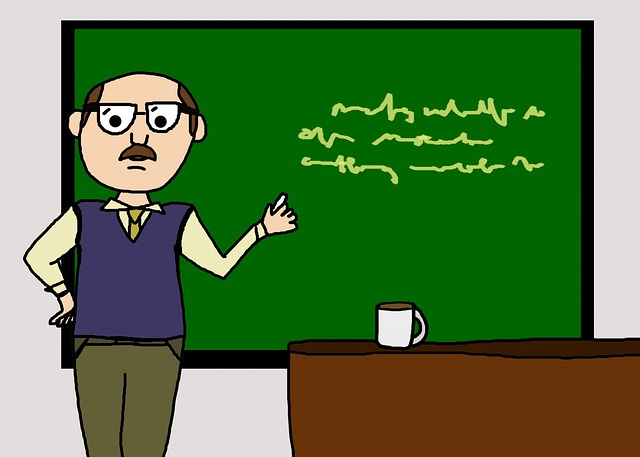Involving young researchers into the design of organization wide measures to promote their careers is tedious.  Getting them into joint committees is difficult as they typically devote 120% of their time to their academic projects, and often they are travelling to attend conferences or work group meetings or to lecture. On the other hand the needs of this group are highly heterogeneous, varying e.g. between disciplines and career stages. Therefore, representation by a few lobbyists does not work. Read how Vienna University of Economics and Business (WU) employed cbased technology to find a way out of this dilemma.
Getting them into joint committees is difficult as they typically devote 120% of their time to their academic projects, and often they are travelling to attend conferences or work group meetings or to lecture. On the other hand the needs of this group are highly heterogeneous, varying e.g. between disciplines and career stages. Therefore, representation by a few lobbyists does not work. Read how Vienna University of Economics and Business (WU) employed cbased technology to find a way out of this dilemma.
Better Post-Doc Promotion Policies with Fewer Meetings - It is Possible!
It is well known that most scientific breakthroughs are made in the late thirties (see e.g. http://www.theatlantic.com/health/archive/2014/02/big-breakthroughs-come-in-your-late-30s/283858/). Continuing this reasoning, it is the Post-Doc Researchers who should be the most precious resource of a university. However, Austrian university law and organizational culture does not reflect this. Post-Docs are under high publication pressure due to time limited contracts, limited tenure positions, significant teaching load and administrative burdens.
For this reason in April 2013 WU decided to introduce special career promotion measures to support her Post-Docs. For this endeavour, Michael Meyer, WU´s vice rector for personnel affairs, decided to adopt a novel process. Instead of many meetings with some stakeholders, he opted for a combination of a small design team and a faculty-wide electronic discussion of the team´s proposals using WU´s in.house version of discuto. The results were stunning: after only a few meetings, a novel research leave funding scheme could be advertised in October 2013. In March 1914, this so-called “Post Doc Research Contracts” were announced for the first time and 10 out of the 80 WU Post Docs applied. How was this possible? Here are the four steps to successful career promotion design.
Introduce Employee Participation into Career Management in Four Steps
- Combine a well chosen small design team operating analog with a broadly defined community addressed electronically with discuto.
The design team consisted of Vice Rector Meyer, assistant professors´ representatives in the senate, Post Docs from various departments and advisors from administrative staff. Prof. Meyer has had the reputation to listen to staff opinions, so that the design team had the necessary knowledge to devise good schemes, the trust to take inputs seriously, the power to decide on measures and the small size necessary for intensive cooperative design work. On the other hand, as the discuto electronic process scales easily, allowed the team not only to invite all 80 WU Post Docs to contribute but the whole faculty.
- Structure the various measures proposed into different arguments, each containing measure description, goal contribution and causality and limitations. Write each argument as a paragraph and group similar measures. Include content about overall goals and constraints.
The document discussed consisted of 28 paragraphs, describing the measures paid leave for research stay, small-group coaching, training, conference fees research project funding and publication funding. It therefore was not too long, but offered a wide variety of well described, concrete measures for discussion. Additionally, new measures could be proposed as comments to an open-ended last paragraph.
- Continuously motivate the community to vote and comment on the paragraphs.
Due to intensive process management, nearly all of WU´s Post-Docs and several other faculty members participated in a lively discussion yielding 159 comments and 543 votes. This wealth of feedback made deciding on the best measure easy: With 31 pro and no con vote a paid research leave at a foreign university for 6-12 month was clearly identified as the best measure, while symbol measures and ill-devised proposals received opposite ratings. Also the comments provided were very helpful in understanding the motivation behind the votes but also in modifying measures.
- Analyze the content collected, decide and explain to the community and implement.
Feedback to each comment was published by the design team. On one hand this was a symbolic reward for the time taken by the community when contributing, on the other hand this made the passing through the official committees smoother, enabling the fast throughput time of the initiative and its high popularity.
Want to try out a project as successful as this one? Check out www.discuto.io or contact us for an in.house installation and project offer.
This post was written together with Vice Rector Prof. Michael Meyer (WU). Prof. Meyer will provide more
details about the project in this opening note of the Workshop in eParticipation on October 9th, 2014
at 4 p.m. at WU Wien Campus ( AD.0.114 Sitzungssaal 1, Gebäude D3 AD, Erdgeschoß, 1020 Wien, Am Welthandelsplatz 1).

